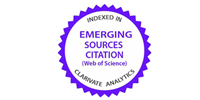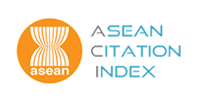DFT Study of Borophene/Graphene (B/G) Heterostructure Properties as Sodium-Ion Battery Anode
DOI:
https://doi.org/10.58915/ijneam.v16iDECEMBER.383Keywords:
Sodium-ion battery, heterostructure anode, borophene/grapheneAbstract
As an alternative to lithium-ion batteries, sodium-ion batteries are gaining more attention as a solution to issues including the high cost and restricted supply of lithium. Nonetheless, issues including low voltage, limited capacity, and low electrode material capacity need to be fixed for sodium-ion battery applications. The proposed borophene/graphene heterostructure anode material for sodium-ion batteries was studied using density functional theory (DFT) to ascertain its properties. The findings demonstrate that there is sufficient interlayer spacing in the borophene/graphene heterostructure to allow for Na-intercalation. The interspace heterostructure has the highest Na adsorption energy of -2.02 eV. As a result, its maximum energy specific capacity is around 969.65 mAh/g. The borophene/graphene heterostructure anode exhibits strong diffusivity of Na ions, as evidenced by the activation energy of Na ion mobility in the heterostructure being less than 0.2 eV.
References
Pan, H., Hu, Y. S., & Chen, L, 2013. Energy and Environmental Science. 6, Issue 8, 2338–2360. https://doi.org/10.1039/c3ee40847g.
Haynes W. M. Handbook of Chemistry and Physics. Florida (US): CRC Press 2016. https://doi.org/10.1201/9781315380476.
Pandit B, Rondiya SR, Dzade NY, Shaikh SF, Kumar N, Goda ES, Al-kahtani AA, Mane RS, Mathur S, Salunkhe RR, 2021. ACS Appl Mater Interfaces. 13 Issue 9, 11433-11441. https://doi.org/10.1021/acsami.0c21081.
Hwang J. Y., Myung S. T., Sun Y. K, 2017. Chem Soc Rev. 46, Issue 12, 3529-3614. https://doi.org/10.1039/c6cs00776g.
Tinambunan, A., Ahmad, F., Sakti, A. W., Putro, P. A., Syafri, & Alatas, H, 2022. Journal of Physical Chemistry C. 126, Issue 49, 20754–20761. https://doi.org/10.1021/acs.jpcc.2c06321.
Lyu, Y., Liu, Y., Yu, Z. E., Su, N., Liu, Y., Li, W., Li, Q., Guo, B., & Liu, B, 2019. Sustainable Materials and Technologies. 21, e00098. https://doi.org/10.1016/j.susmat.2019.e00098.
Luo, W., Shen, F., Bommier, C., Zhu, H., Ji, X., & Hu, L, 2016. Accounts of Chemical Research. 49 Issue 2, 231–240. https://doi.org/10.1021/acs.accounts.5b00482.
Du, Y. T., Kan, X., Yang, F., Gan, L. Y., & Schwingenschlögl, U, 2018. ACS Applied Materials and Interfaces. 10 Issue 38, 32867–32873. https://doi.org/10.1021/acsami.8b10729.
Yankowitz, M., Ma, Q., Jarillo-Herrero, P., & LeRoy, B. J., 2019. Nature Reviews Physics. 1, Issue 2, 112–125. https://doi.org/10.1038/s42254-018-0016-0.
Wang, T., Li, C., Xia, C., Yin, L., An, Y., Wei, S., & Dai, X, 2020. Physica E: Low-Dimensional Systems and Nanostructures. 122, 114146. https://doi.org/10.1016/j.physe.2020.114146.
Liu, X., & Hersam, M, 2019. C. Sci. Adv. 5 Issue 10, eaax6444. https://doi.org/10.1126/sciadv.aax6444.
Lin, Y., Yu, M., Li, X., Gao, W., Wang, L., Zhao, X., Zhou, M., Yao, X., He, M., & Zhang, X, 2021. J. Mater. Chem. C. 9 Issue 44, 15877–15885. https://doi.org/10.1039/D1TC04197E.
Fan, K., Tang, T., Wu, S., & Zhang, Z, 2018. International Journal of Modern Physics B. 32, Issue 1, 1850010. https://doi.org/10.1142/S0217979218500108.
Yang, Z., Li, W., & Zhang, J, 2021. Nanotechnology. 33 Issue 7, 75403. https://doi.org/10.1088/1361-6528/ac3686.
Xiong, Z., Zhong, L., Wang, H., & Li, X, 2021. Materials. 14 Issue 5, 1–43. https://doi.org/10.3390/ma14051192.
Yu, J., Zhou, M., Yang, M., Yang, Q., Zhang, Z., & Zhang, Y, 2020. ACS Applied Energy Materials. 3, Issue 12, 11699–11705. https://doi.org/10.1021/acsaem.0c01808 .
Bao, J., Zhu, L., Wang, H., Han, S., Jin, Y., Zhao, G., Zhu, Y., Guo, X., Hou, J., Yin, H., & Tian, J, 2018. Journal of Physical Chemistry C. 122 Issue 41, 23329–23335. https://doi.org/10.1021/acs.jpcc.8b07062.
Chowdhury, C., Karmakar, S., & Datta, A, 2016. ACS Energy Letters. 1 Issue 1, 253–259. https://doi.org/10.1021/acsenergylett.6b00164.
Mansouri, Z., Sibari, A., Al-Shami, A., Lahbabi, S., el Kenz, A., Benyoussef, A., el Fatimy, A., & Mounkachi, O, 2022. Computational Materials Science. 202, 110936. https://doi.org/10.1016/j.commatsci.2021.110936.
Tang, C., Min, Y., Chen, C., Xu, W., & Xu, L, 2019. Nano Letters. 19, Issue 8, 5577–5586. https://doi.org/10.1021/acs.nanolett.9b02115.
Samad, A., Noor-A-Alam, M., & Shin, Y. H, 2016. Journal of Materials Chemistry A. 4, Issue 37, 14316–14323. https://doi.org/10.1039/c6ta05739j.
Yang, C., Sun, X., Zhang, X., Li, J., Ma, J., Li, Y., Xu, L., Liu, S., Yang, J., Fang, S., Li, Q., Yang, X., Pan, F., Lu, J., & Yu, D, 2021. Carbon. 176, 242–252. https://doi.org/10.1016/j.carbon.2020.12.039.

















